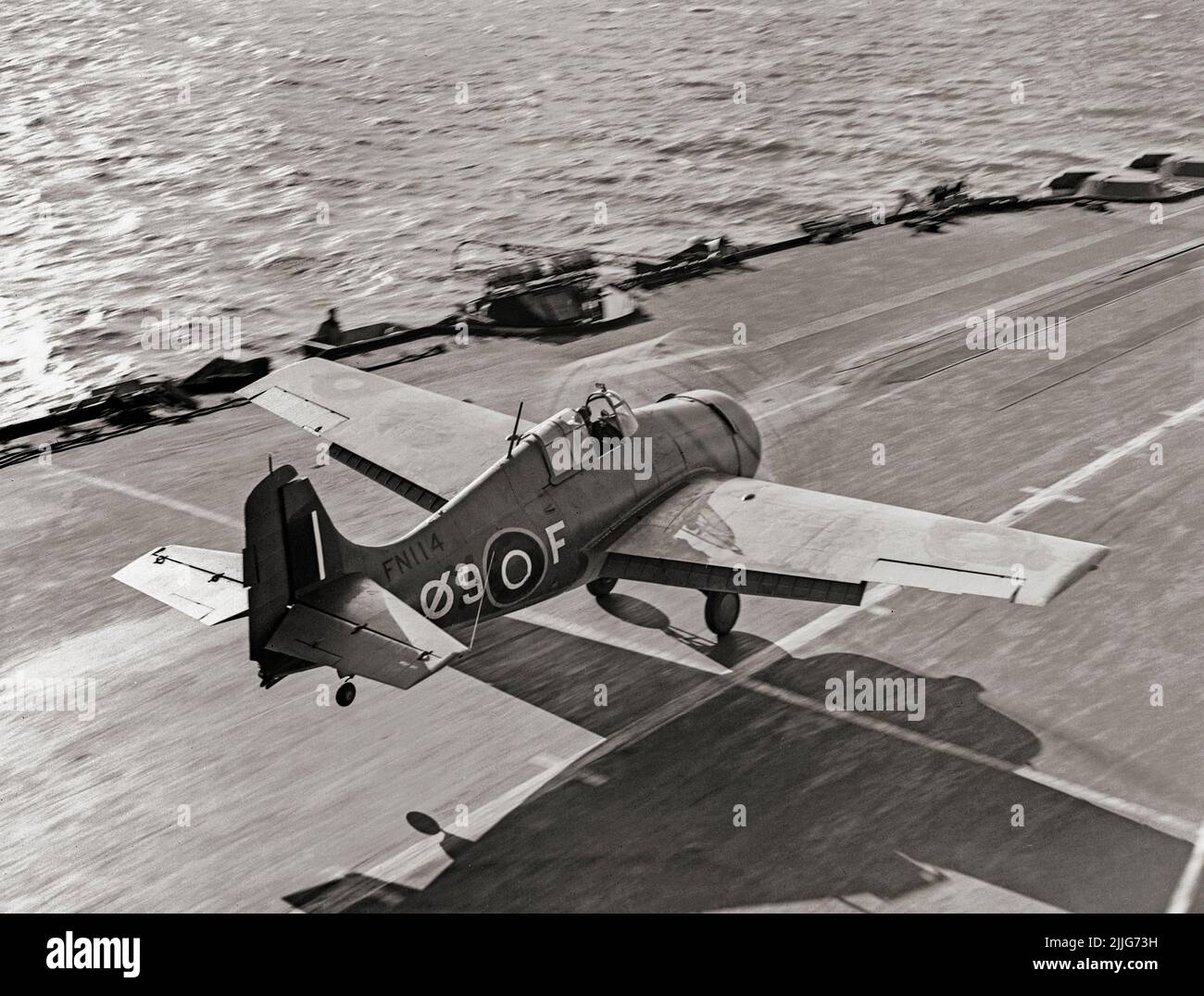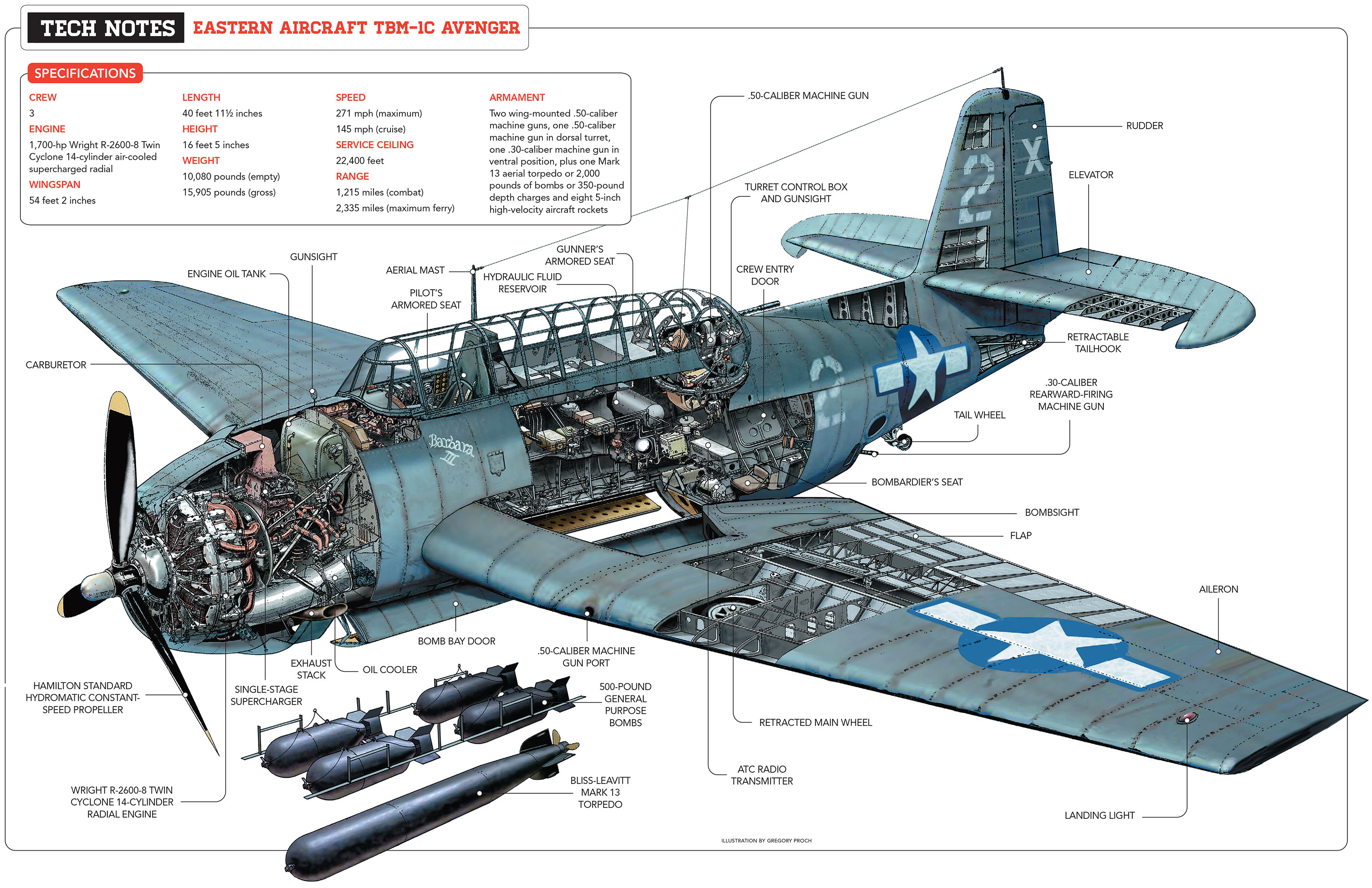Grumman Wwii Fighters - The Grumman XF5F Skyrocket was a prototype twin-engine cruiser fighter. The United States Navy ordered a prototype, model number G-34, from Grumman Aircraft Engineering Corporation on 30 June 1938; Its designation was XF5F-1. The plane had a unique appearance. The forward "nose" of the fuselage does not extend forward of the wings. Magazines were included for two 20 mm (0.906 in) Mad cannons as armament.
In 1938, Grumman submitted a proposal to the US Navy for a twin carrier-based aircraft that was unlike any other fighter that had ever been considered. The design was for a light fighter (up to 10,000 pounds maximum takeoff weight) with propellers powered by two 1,200 hp Wright R-1820 engines each designed to rotate in opposite directions to cancel the wind torque effect. - Speed and excellent climbing speed.
Grumman Wwii Fighters

The XF5F Skyrocket was a low-wing aircraft with a short fuselage starting aft of the leading edge of the wing, with twin tails that hinged to a prominent horizontal stabilizer biplane. The main landing gear and tailwheel were fully retractable.
Grumman F6f 3k Hellcat
The aircraft took off for the first time on April 1, 1940. Early flights showed wine cooling problems, leading to replacement of the oil cooling pipes. Further changes were made to the prototype, including reducing the height of the cockpit, modifying the gun mount to four 0.5 (12.7 mm) machine guns instead of cannon, redesigning the resonators, adding rotors to the propellers, and lengthening the fuselage. wings These changes were completed on July 15, 1941.
Tests by Grumman test pilot "Connie" Converse indicated that the XF5F-1's flying qualities were generally good. The counter-rotating props were a nice feature that virtually eliminated the effect of rotation in flight...single engine performance was good, steering forces were high in the single gin configuration. Spin recovery was positive, but the lift forces required for recovery were unusually high. All the acrobatics were performed with ease and of course forward visibility was excellent.
In 1941, Navy pilots tested the XF5F-1 against the Supermarine Spitfire, Hawker Hurricane, Curtiss P-40 Warhawk, Bell P-39 Aracobra, Bell XFL Arabonita, Vought XF4U Corsair, Grumman F4F Wildcat 2, and Breu. Buffalo:
"For example, I remember testing the XF5F at 10,000 feet against the XF4U. I got away from the Corsair so quickly that I thought he was in trouble. The F5F was a carrier pilot's dream, as were the counter-rotating propellers. All torque was removed and the LSO (landing signal Officer) to see you don't have much power to look forward... All data analysis definitely favored the F5F and the Spitfire came a distant second. ... ADM Tower told me that the availability of spare parts and other details compounded the difficulty of building a twin engine fighter. The Skyrocket was rejected, and the Bureau settled on the Wildcat for mass production.
Is This A Sneak Peek At The Air Force's Secret New Fighter Jet?
Further changes were required after further flight tests, which were completed by 1942. January 15 At the same time, Grumman began work on a more advanced twin-engine ship destroyer, the XF7F-1, and further tests with the XF5F-1 supported development. With new design. The prototype was used in various tests, despite various landing gear problems, until it was withdrawn from the active aircraft list after a belly-landing on 11 December 1944.
The XF5F Skyrocket was a fighter plane flown by the fictional Blackhawks in the Quality Comics monthly military comics title during World War II. The XF5F remained the backbone of the Blackhawk squadron until their conversion to the jet in modern comics titled Quality at the start of the jet era. The Grumman F7F Tigercat is a heavy fighter that has served with the United States Navy (USN) and the United States Marine Corps. (USMC) from the end of World War II until 1954. It was the first twin fighter deployed by the USN. Although the Tigercat was delivered too late to see combat in World War II, it was seen as a night fighter and attack aircraft during the Korean War.
Originally designed to serve Midway-class aircraft carriers, the initial production F7Fs were land-based variants. The type was too large to operate from older and smaller carriers, and only a late version (F7F-4N) was certified for carrier service.

Based on the earlier Grumman XP-50, which was eventually cancelled, the company developed the XP-65 (Model 51) to advance the "convoy fighter" concept. In 1943, work on the XP-65 ceased in favor of the design that would eventually become the F7F.
Legend: Why F6f Hellcat Was A Wwii Game Changer
The contract for the XF7F-1 prototype was signed in 1941. On June 30. Grumman's goal was to produce a fighter that was superior to all existing fighters and had a supporting ground attack capability.
The performance of the prototype and early production aircraft lived up to expectations. The F7F was one of the fastest piston-engined fighters, with a top speed significantly higher than that of single-engine USN aircraft, 71 mph faster than the Grumman F6F Hellcat at sea level.
Captain Fred Trapnell, one of the best test pilots of the USN era, said:
The F7F was to be heavily armed with four 20 mm cannon and four 50-caliber (0.50 in; 12.7 mm) machine guns, as well as under and underside hardpoints for bombs and torpedoes. This speed and firepower came at the cost of heavy weight and high landing speed, but the aircraft failed carrier suitability tests due to poor directional stability with only one engine running, as well as problems with the tailplane design.
For Sale: An Airworthy Grumman Avenger
Therefore, the initial production run was used by the USMC only from land bases as night fighters with the APS-6 radar.
Although the F7F was also originally known as the Grumman Tomcat, this name was dropped because it was considered too sexual overtones at the time;
(Since the 1970s, the name Tomcat has been commonly associated and officially used by the Navy with another Grumman design, the F-14 twin jet carrier-based interceptor). The first production version was the single-seat F7F-1N; After the 34th production aircraft, a second radar operator seat was added and these aircraft were designated the F7F-2N.
A second production version, the F7F-3, was modified to correct problems that prevented the aircraft from being accepted on a carrier, and this version was again tested on the USS Shangri-La. A wing failure during a hard landing also caused this carrier to fail to qualify. The F7F-3 aircraft was produced in day, night fighter and photoreconnaissance versions.
Heroics & Ros 6mm Wwii Us Aircraft Usa206 Grumman F7f Tigercat Heavy Fighter X 2
The final production version, the F7F-4N, was extensively redesigned for increased strength and stability and was carrier worthy, but only 12 were built.
Marine Corps Night Fighter VMF(N)-513 saw F7F-3N Tigercats fly night interceptor and fighter missions and destroy two Polikarpov Po-2 biplanes during the early stages of the Korean War.
Most F7F-2Ns were modified for combat readiness to handle drones, and they received bubble canopies in the rear cockpit for drones. The F7F-2D used for pilot crossings also had a rear sliding, bubble canopy.
In 1945, two Tigercats, serial numbers TT346 and TT349, were evaluated but rejected by the British Royal Navy in favor of a naval version of the de Havilland Hornet.
A Ww2 Usn Grumman F6f Hellcat Fighter Plane At The Tucson Airshow In Arizona Stock Photo
Twin fighter-bomber powered by two Pratt & Whitney R-2800-22W radial piston engines. First production version: 34 built.
A small number of F7F-2Ns have been converted to drone control aircraft. The aircraft featured a Grumman F8F Bearcat windshield mounted behind the cockpit.
Single-seat fighter-bomber powered by two Pratt & Whitney R-2800-34W radial pistons and featuring a large tailplane to improve high-altitude stability, 189 built.

From 1949, F7Fs flew to America. The Naval Depot at Naval Air Station Litchfield Park, Arizona.
Rare Bearcat To Perform At Midlands Air Festival 2023 — European Airshows
Although most of the airframes were eventually scrapped, many examples were purchased as surplus. Surviving Tiger Cats were primarily used as water bombers to fight forest fires in the 1960s and 1970s, and Sis-Q Flying Services of Santa Rosa, California operated F7F-3N tankers in this role until their retirement in the late 1980s. Grumman F4F Wildcat An American carrier-based fighter in service with the United States Navy and the Royal Navy of Great Britain in the 1940s, where it was originally known as the Martlet.
First used by the British in the North Atlantic, the Wildcat was the only effective destroyer available to the United States Navy and Marine Corps in the Pacific Theater during the early part of World War II. The disappointing Brewster Buffalo was abandoned in favor of the Wildcat and replaced when the aircraft became available.
With a top speed of 318 mph (512 km/h), the Wildcat surpassed the faster (331 mph (533 km/h)), more maneuverable and longer range Mitsubishi A6M Zero. US Navy pilots, including John "Jimmy" Touche, who pioneered the strategy of dealing with the A6M Zero, were very dissatisfied with the Wildcat's poor performance against the Zero at the Battle of Coral Sea and Midway.
The Wildcat has a ratio of 5.9:1 in 1942 and 6.9:1 for tires in air combat kills and losses.
F4 Wildcat Hi Res Stock Photography And Images
Ruger 556 review, vg6 epsilon 556 review, msar stg 556 review, sinn 556 review, sinn 556 i review, meridian 556 review, eotech 556 review, precor efx 556 elliptical review, benchmade 556 review, surefire sfmb 556 review, precor efx 556 review, sinn 556 anniversary review
0 Comments